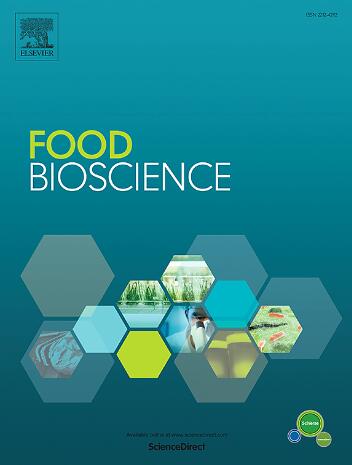Polyphenol profile and associated antioxidant, antiproliferative and anti-inflammatory activities of Mexican Opuntia fruits
IF 5.9
1区 农林科学
Q1 FOOD SCIENCE & TECHNOLOGY
引用次数: 0
Abstract
Opuntia
(Cactaceae) species grow in arid and semi-arid regions around the globe. They grow in the wild but they are also cultivated and constitute an underestimated source of nutrients and functional compounds for human consumption and animal feed. The polyphenol composition and bioactivity of the fruits of six Opuntia that grow and/or are cultivated in Mexico have been investigated. These are O. ficus-indica, O. albicarpa, O.megacantha, O. undulata, O. robusta and O. joconostle. Protocatechuic, gallic, sinapic and ferulic acids were the most abundant polyphenols. The samples exhibited high antioxidant activity as assessed using the DPPH and ABTS radical scavenging assays, and also in Caco-2 cells exposed to the ABAP radical. The samples also inhibited proliferation of the Caco-2 and THP-1 cell lines, and the production of nitric oxide by RAW 246.7 cells. These activities indicate that Mexican Opuntias represent a valuable source of bioactive components with health promoting properties, which could constitute the basis for a revaluation of these plants.
多酚谱及其抗氧化、抗增殖和抗炎活性
仙人掌科(仙人掌科)种生长在全球干旱和半干旱地区。它们生长在野外,但也被人工栽培,是一种被低估的供人类食用和动物饲料的营养和功能性化合物来源。研究了在墨西哥生长和/或栽培的六种仙人掌果实的多酚成分和生物活性。它们分别是无花果树、白蜡树、巨棘树、波状树、robusta和joconconstle。原儿茶酸、没食子酸、辛酸和阿魏酸是最丰富的多酚。通过DPPH和ABTS自由基清除实验,以及暴露于ABAP自由基的Caco-2细胞,样品显示出较高的抗氧化活性。该样品还能抑制Caco-2和THP-1细胞系的增殖,并抑制RAW 246.7细胞产生一氧化氮。这些活动表明,墨西哥仙人掌是具有促进健康特性的生物活性成分的宝贵来源,这可能构成重新评估这些植物的基础。
本文章由计算机程序翻译,如有差异,请以英文原文为准。
求助全文
约1分钟内获得全文
求助全文
来源期刊

Food Bioscience
Biochemistry, Genetics and Molecular Biology-Biochemistry
CiteScore
6.40
自引率
5.80%
发文量
671
审稿时长
27 days
期刊介绍:
Food Bioscience is a peer-reviewed journal that aims to provide a forum for recent developments in the field of bio-related food research. The journal focuses on both fundamental and applied research worldwide, with special attention to ethnic and cultural aspects of food bioresearch.
 求助内容:
求助内容: 应助结果提醒方式:
应助结果提醒方式:


